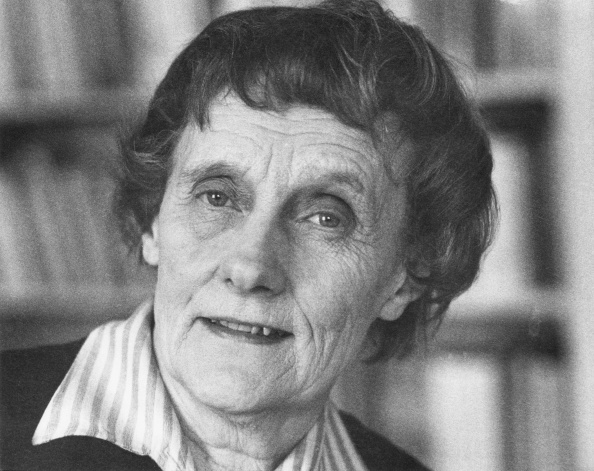What is Astrid Lindgren's Net Worth?
Astrid Lindgren was a Swedish writer who had a net worth of $20 million at the time of her death in 2002. Astrid Lindgren was best known for her children's books featuring such characters as Pippi Longstocking, Karlsson-on-the-Roof, and Emil of Lönneberga. She also penned the popular children's fantasy novels "The Brothers Lionheart" and "Ronia, the Robber's Daughter," among numerous other titles. Her books have sold over 140 million copies worldwide. Beyond literature, Lindgren advocated against the use of corporal punishment for children, resulting in the world's first law on the matter in 1979. Astrid Lindgren passed away on January 28, 2002 at the age of 94.
Early Life
Astrid Lindgren was born as Astrid Ericsson on November 14, 1907 in Vimmerby, Sweden to Hanna and Samuel. She had an older brother and two younger sisters. After finishing school, she worked at the local newspaper Vimmerby Tidning. There, Lindgren had an affair with the chief editor and became pregnant, causing a scandal.
Career Beginnings
Before becoming a full-time author, Lindgren worked as a secretary and as a journalist. She served as a secretary at Sweden's Royal Automobile Club in the late 1920s, and in 1933 worked as a secretary for the Swedish Summer Grand Prix. In the early 1940s, Lindgren was a secretary for criminalist Harry Söderman.

(Photo by Binder/ullstein bild via Getty Images)
Children's Books
Lindgren had her career breakthrough in 1945 with her children's book "Pippi Longstocking." Focused on the titular red-haired and supernaturally strong girl, the book went on to become a huge hit around the world, translated into 100 languages. Pippi Longstocking became Lindgren's most famous character, appearing in two more chapter books and later in short stories, picture books, films, and television series. Lindgren created a number of other popular characters over the years. In 1946, she published "Bill Bergson, Master Detective," the first in a series featuring the titular Swedish boy detective. The next year, Lindgren published "All About the Bullerby Children," the first of four books about six children living in a small remote village in Sweden. In the 1950s, Lindgren introduced the characters Kati, a typist who loves to travel, and Karlsson-on-the-Roof, a plump and overconfident man who lives in a small house on the roof of an apartment building and can fly using a propeller on his back. Also in the 1950s, Lindgren wrote the children's fantasy novel "Mio, My Son," and began writing books in the "Children's Everywhere" photo book series.
Lindgren continued her prolific writing in the 1960s. That decade, she introduced the character Emil of Lönneberga, a prankster who lives on a farm. He went on to appear in a total of 12 books throughout the years. Lindgren also introduced the young girl characters Madicken and Lotta in the 1960s. Additionally, she penned such individual books as "Christmas in the Sable," "Seacrow Island," and "Scrap and the Pirates." In the 1970s, Lindgren wrote the popular children's fantasy novel "The Brothers Lionheart," as well as two books about the sibling characters Peter and Lena. Early the next decade, she published another fantasy book, "Ronia, the Robber's Daughter," about a girl growing up among a gang of robbers in medieval Scandinavia. Lindgren later published the books "The Dragon with Red Eyes," "The Ghost of Skinny Jack," and "A Calf for Christmas." She continued writing in the 1990s and up until her death in the early 00s, with books including "The Day Adam Got Mad" (1991) and "Mirabelle" (2002). There have also been some books by Lindgren published posthumously, such as "Now That Night is Near," which came out in 2019.
Other Written Works
In addition to her children's books, Lindgren wrote some screenplays and plays. For the screen, she adapted her radio play "Rasmus and the Vagabond" into a 1955 film, which subsequently became a novel. As a playwright, Lindgren wrote a number of plays for the Swedish stage, with many based on her books and characters, such as Pippi Longstocking.
Advocacy
In 1978, Lindgren spoke out against the corporal punishment of children in a speech called "Never Violence." She went on to partner with scientists, politicians, and journalists to further promote non-violent childrearing. Consequently, in 1979, a law was introduced in Sweden prohibiting corporal punishment for children, the first law of its kind anywhere in the world. Lindgren was later integral in passing another law, which involved animal production.
Tax Controversy
In 1976, Lindgren was involved in a national controversy related to taxation. After it was revealed that her marginal tax rate had risen to 102%, she wrote a satirical story about the matter called "Pomperipossa in Monismania" that denounced the government and its taxation policies. This drew criticism from Social Democrats and others. In that year's general election, the Social Democratic government was voted out for the first time in 44 years.

Getty
Honors and Awards
Lindgren was the recipient of numerous honors and accolades during her lifetime. In 1967, the publisher Rabén & Sjögren created an annual literary prize in her name to mark her 60th birthday. Later, in 1978, Lindgren earned the Peace Prize of the German Book Trade. For her advocacy work supporting children's and animal rights, she received the Right Livelihood Award in 1994. The following year, Lindgren earned the Illis quorum gold medal from the Swedish government, and in 1997 was named International Swede of the Year for her 90th birthday.
Personal Life and Death
Lindgren had one son, Lars, whom she had from her controversial affair with her chief editor at the Vimmerby Tidning newspaper. Lars passed away in 1986. Lindgren later had a daughter named Karin from her marriage to Sture Lindgren, who was her boss at Sweden's Royal Automobile Club.
On January 28, 2002, Lindgren passed away at her home in Stockholm. She was 94 years of age. A high-profile funeral was held in Gamla stan with many members of the royal family in attendance.
/2015/04/astrid.jpg)
/2010/07/GettyImages-71554816-e1565883630470.jpg)
/2014/12/maurice.jpg)
/2021/08/Malala-Yousafzai.jpg)
/2022/11/toni.jpg)
/2018/01/in.jpg)
/2016/12/Denis-Villeneuve.jpg)
/2022/02/tim-conway.png)
/2010/03/Carol-Burnett-1.jpg)
/2012/11/Elsa-Patton.jpg)
/2017/06/Curtis-Sliwa-1.jpg)
/2011/11/Eric-Idle.jpg)
/2018/09/Harvey-Korman.png)
/2015/07/Ron-Harper.jpg)
/2014/01/tara-wallace.jpg)
/2011/02/Marysol-Patton-1.jpg)
/2020/06/Suzanne-Somers.jpg)
/2015/04/astrid.jpg)
/2018/01/in.jpg)
/2014/12/maurice.jpg)
/2010/07/Stieg-Larsson.jpg)
/2022/02/seuss.jpg)
/2022/11/toni.jpg)
/2012/07/Mary-Higgins-Clark-e1580530409588.jpg)
/2014/09/GettyImages-467499058.jpg)